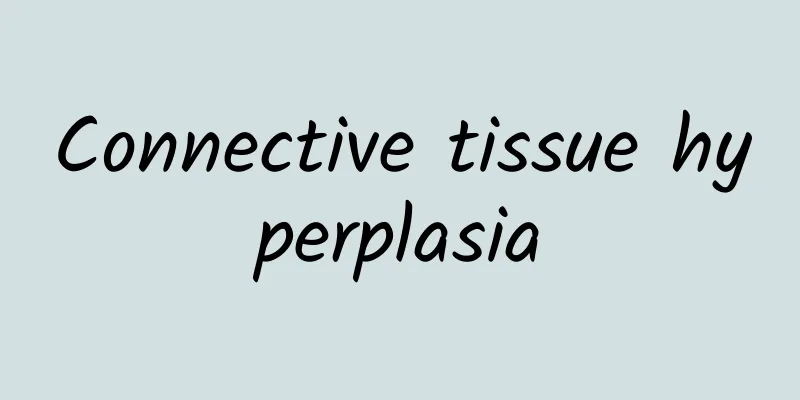The best treatment for internal hemorrhoids

|
Hemorrhoids are a common disease that often occurs around the anus and is mostly caused by constipation. Many patients are tortured and devastated by this disease. When a person wants to defecate but can't, it's very painful. Moreover, constipation can cause pain around the anus, which makes people not want to have a bowel movement. This creates a vicious cycle, making the disease more serious. Hemorrhoids are prone to occur, especially in relatively private areas, so most people feel embarrassed and do not seek medical treatment. Internal hemorrhoids are a common disease. If not treated early, it will cause bleeding during bowel movements, anal prolapse, pain and other symptoms. Therefore, in order to avoid such pain, I advise everyone to seek treatment early if they know they have this disease. So let’s see what treatments there are. Nonsurgical treatment (1) Intestinal function regulation: Keep bowel movements smooth and change the habit of holding your breath during bowel movements. For people suffering from constipation, the cause should be identified, such as anal outlet obstruction or delayed colon emptying, and targeted treatment should be given. For patients with chronic constipation, it is recommended to eat more fruits and cereals, and give laxatives when necessary, trying to use dietary adjustments to establish smooth bowel movements. (2) Injection method: There are many drugs used for injection therapy, but they are basically divided into two categories: sclerosing agents and necrotizing agents. Since necrotizing agents can cause many complications, sclerosing agents are currently recommended. However, if too much sclerosing agent is injected, necrosis may also occur. The purpose of injection therapy is to inject a sclerosant around the hemorrhoids to produce a sterile inflammatory reaction, thereby achieving the purpose of occluding small blood vessels and causing fibrosis and hardening and atrophy within the hemorrhoids. Commonly used hardeners include 5% phenol (carbolic acid) vegetable oil, 5% sodium morrhuate, 5% quinine hydrochloride urea aqueous solution and 4% alum aqueous solution. Using 5% carbolic acid vegetable oil for large-dose injection has the following advantages: ① Using 5% concentration, the total dose can be injected 10 to 1.5 ml, generally with no adverse reactions. However, when using other hardeners, small doses have poor therapeutic effects, while large doses can cause mucosal necrosis or ulcers; 2. Solutions prepared with vegetable oils are easily absorbed and have small reactions, while drugs prepared with other mineral oils are not easily absorbed and can cause adverse consequences; 3. Carbolic acid itself has a bactericidal effect, which is particularly beneficial in areas that are easily contaminated, such as the anus; 4. Fewer local scars are produced after injection. Through 100 years of clinical practice, injection therapy has been proven to have no hidden harm to the human body and has become a reliable treatment recognized by the world. ① Indications: Injection therapy can be used for internal hemorrhoids without complications. This treatment is most suitable for stage 1 internal hemorrhoids with the main complaint of bloody stools but no prolapse. It is very effective in controlling bleeding and can stop bleeding with one injection, with a high cure rate within 2 years. Injection can prevent or alleviate prolapse of stage 2 and 3 internal hemorrhoids. Injection can still be used if bleeding or prolapse occurs again after hemorrhoid surgery. Injection treatment can be used for the elderly, the weak, severe hypertension, and patients with heart, liver, kidney and other diseases. ② Contraindications: Any external hemorrhoids and internal hemorrhoids with complications (such as thrombosis, infection or ulcer, etc.) are not suitable for injection therapy. ③Method: Before injection, ask the patient to empty his bowels, lie on his side or in knee-chest position, and use an oblique or round-head anoscope to disinfect the injection site and insert the needle tip into the submucosal layer about 0.5 cm above the root of the hemorrhoids on the dentate line. If the needle can move left and right after insertion, it proves that it is in the submucosal layer. If it is inserted too deep and enters the mucosal muscular layer or sphincter layer, the needle tip will not move left and right easily. The needle should be pulled out a little, and the injection can be started after aspiration if there is no blood return. The needle should not be inserted into the central venous plexus of the hemorrhoidal mass to prevent the sclerosant from entering the blood circulation and causing acute hemorrhoidal venous thrombosis. The amount of 5% carbolic acid vegetable oil injected depends on the degree of mucosal relaxation and the size of the hemorrhoids. Generally, 2 to 4 ml is injected into each hemorrhoid. If the mucosa is very loose, 6 ml can be injected. Inject 3 mother hemorrhoids with a total volume of 10 to 15 ml. The drug solution is injected into the submucosal layer, making the injection site become a light red and slightly white bulge. Microvessels can sometimes be seen on the surface of the bulge. This phenomenon is called the streak sign. If the injection is too shallow, you can immediately see the mucosa at the injection site turn into a white bulge, which will then necrotize and fall off, leaving a superficial ulcer; if the injection is too deep and penetrates the muscle layer of the intestinal wall, it can immediately cause pain; if the injection is below the dentate line, it can also immediately cause severe pain. Therefore, the depth of injection is related to the success or failure of this therapy. Puncture and injection in the anterior midline should not be performed because it can easily damage the prostate, urethra or vagina. After the injection is completed and the needle is removed, observe whether there is bleeding at the puncture site. If there is bleeding, apply pressure for a while with a sterile cotton ball to stop the bleeding. Usually, when the anoscope is removed, the sphincter contracts, preventing bleeding from the pinhole or the sclerosant from flowing out of the pinhole. Inject once every 5 to 7 days, no more than 3 internal hemorrhoids should be injected each time, and 1 to 3 injections constitute a course of treatment. The area of each second injection should be lower than the first one. If 10% carbolic acid vegetable oil or 5% sodium morrhuate is used, each injection should not exceed 1 ml, and it is best to use a tuberculin syringe for injection. The above is just for your reference. If you still want to know more, you can also check out the relevant articles on the Internet. I believe you can find the answers you want. Secondly, we should do a good job of preventing this disease in our daily life. Some people do not exercise for a long time, so their immunity decreases and their functions in all aspects also deteriorate. So for the sake of health and the future, I hope everyone can take the time to do some simple exercises that are beneficial to the body, so that you don’t have to worry about contracting such a disease at that time. |
>>: Macular degeneration treatment
Recommend
What are the soups that can moisten the lungs and relieve coughs in autumn?
Drinking soup is the best way to relieve cough in...
What should I do if my fingers are swollen and painful due to rheumatoid arthritis?
Rheumatoid arthritis is also known as rheumatoid ...
Is numbness in the little finger a sign of heart disease? How to deal with it?
Heart problems have been an important issue threa...
There is still a small amount of blood after the menstrual period
The length of each woman's menstrual period i...
Why does the pain after cupping
Some people experience pain during cupping therap...
If a tooth is broken, will it grow back?
It is quite common to have a small piece of tooth...
How to correct lower overbite
Underbite is also a common symptom of underbite. ...
What are the advantages and disadvantages of sweat steaming for women
I believe many men are not familiar with the word...
How to lengthen your penis
During the second development process, if the sec...
What should I do if I have mouth ulcers during breastfeeding? Causes and treatments of oral ulcers
Mouth ulcers, also known as oral ulcers, are a di...
Why do comatose patients shed tears?
Everyone should be familiar with the behavior of ...
How to cook corn, baking soda makes boiled corn taste so good
Corn is a common food in our daily life. Corn is ...
Vitamin C treats oral ulcers, and supplements more vitamin B2!
Oral ulcers, also known as mouth sores, are mainl...
What to do if there are cracks on the tooth surface
What should I do if there are cracks on the tooth ...
What are the symptoms of liver pain?
Liver pain is quite common in bed. This symptom i...









